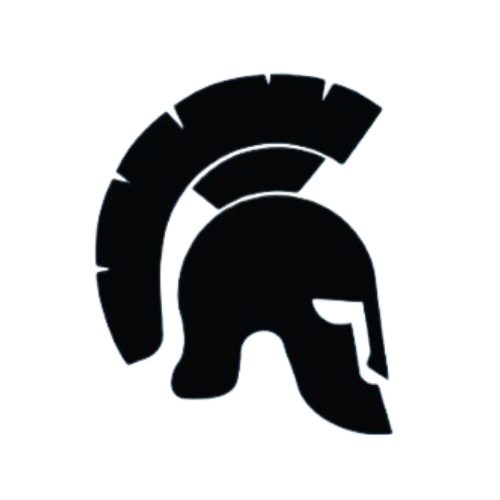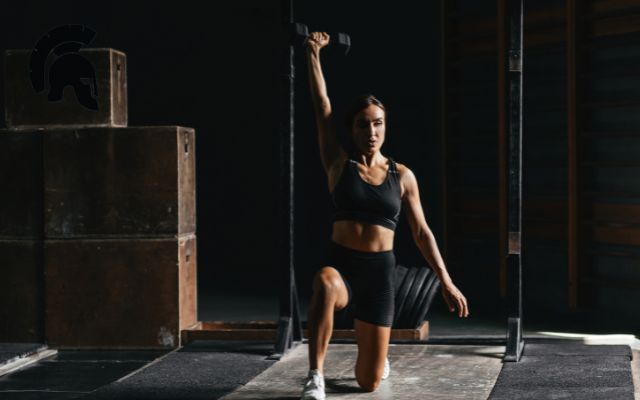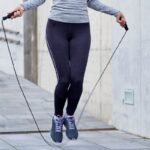As you dive into workout materials or participate in our sessions, you’ll likely encounter specific terms unique to CrossFit. I think understading these terms will help you follow instructions more confidently, track your progress effectively, and feel more at ease during exercises. To ensure you’re well-prepared, I’ve compiled a list of commonly used CrossFit vocabulary. This list will give you a solid foundation, making it easier to understand the techniques, strategies, and structure of each workout.
Let me know if you have any questions as you go through them!
Decoding the CrossFit Language
- AMRAP – As Many Rounds/Reps As Possible.
- ATG – Ass To Grass; refers to deep squats.
- Box – Slang for a CrossFit gym.
- Burpee – A full-body exercise combining a squat, push-up, and jump.
- C&J – Clean and Jerk; an Olympic lift.
- CFT – CrossFit Total; a test of strength.
- Chipper – A workout format where exercises are completed in sequence.
- Couplet – A workout structure that pairs two different movements.
- CrossFit Games – The annual competition to crown the fittest athletes.
- CrossFit Open – A worldwide competition allowing local participation.
- DB – Dumbbell; a common weight used in workouts.
- DL – Deadlift; a foundational lifting movement.
- Double Unders (DUs) – Jumping rope where the rope passes under twice per jump.
- EMOM – Every Minute On the Minute; perform a set task at the start of each minute.
- For Time – Complete the workout as quickly as possible.
- Fran – A benchmark workout involving thrusters and pull-ups in a 21-15-9 rep scheme.
- GHD – Glute Hamstring Developer; used for posterior chain exercises.
- Hero WODs – Workouts named after fallen service members or first responders.
- Kettlebell (KB) – A cast-iron weight with a handle used in various exercises.
- Kipping – A technique using body momentum in pull-ups and handstand push-ups.
- Ladder – A workout format where reps increase each round.
- Metcon – Metabolic Conditioning; high-intensity workouts designed to improve endurance.
- Mobility – Exercises aimed at improving range of motion and flexibility.
- Murph – A challenging Hero WOD consisting of running and high-rep bodyweight exercises.
- OHS – Overhead Squat; a squat performed with the barbell overhead.
- PR (Personal Record) – The best performance recorded in an exercise or workout.
- Rx’d – Performing workouts exactly as prescribed, without modifications.
- Scaled – Modifying workouts to suit individual skill levels or physical limitations.
- Set – A specific number of repetitions performed consecutively (e.g., 3 sets of 10 reps).
- Snatch (SN) – An Olympic lift where the barbell is lifted from the ground to overhead in one motion.
- Squat Clean (SC) – A clean that transitions into a front squat.
- Tabata – A workout format of 20 seconds of work followed by 10 seconds of rest for 8 rounds (4 minutes total).
- Toes-to-Bar (T2B) – Hanging from a bar and raising toes to touch it.
- Wall Ball – A movement involving squatting with a medicine ball and throwing it against a wall.
- WOD (Workout of the Day) – The daily prescribed workout for CrossFit athletes.
- Weightlifting (WL) – The sport of lifting weights, typically involving Olympic lifts like snatch and clean & jerk.
- Pistol Squat – A one-legged squat that requires balance and strength.
- Ring Muscle-Up (RMU) – Transitioning from a pull-up to a dip on gymnastic rings.
- Box Jump (BJ) – Jumping onto a box from a standing position.
- Chest-to-Bar Pull-Up (C2B) – A pull-up where the chest must touch the bar at or below the collarbone level.
- Farmers Carry – Carrying heavy weights in each hand while walking for distance or time.
- GPP (General Physical Preparedness) – Overall fitness level across various physical tasks and challenges.
- HSPU (Handstand Push-Up) – Performing push-ups while in a handstand position against a wall or freestanding.
- Kipping Pull-Up – Using momentum from swinging to perform pull-ups more efficiently than strict pull-ups.
- Lateral Barbell Burpee (LBB) – Performing burpees while jumping laterally over a barbell after each rep.
- Open Workout – Specific workouts released during the CrossFit Open competition that all participants complete and submit scores for ranking purposes.
- Pukie – Slang for vomiting, often used humorously among athletes after intense workouts.
- RFT (Rounds For Time) – Completing multiple rounds of prescribed exercises as quickly as possible, often noted as “3 RFT.”
- Sled Push/Pull – Pushing or pulling a weighted sled across a distance for strength training and conditioning.
- Sled Push/Pull – A strength and conditioning exercise where athletes push or pull a weighted sled across a distance.
- Split Jerk (SJ) – A variation of the jerk where the athlete splits their legs to catch the bar overhead.
- Sumo Deadlift High Pull (SDLHP) – A movement that combines a sumo deadlift with a high pull, targeting multiple muscle groups.
- Tabata – A high-intensity interval training format consisting of 20 seconds of work followed by 10 seconds of rest, repeated for 8 rounds.
- Thruster – A compound exercise that combines a front squat with a push press, engaging multiple muscle groups.
- Toes-to-Bar (T2B) – An exercise where athletes hang from a bar and lift their legs to touch the bar with their toes, focusing on core strength.
- Wall Ball – A movement that involves squatting while holding a medicine ball and then throwing it against a wall.
- Warm-Up (WU) – A preparatory routine performed before workouts to increase heart rate and prepare muscles for exercise.
- Workout of the Day (WOD) – The daily prescribed workout in CrossFit gyms, often varying in structure and intensity.
- Yoke Carry – A strength exercise where athletes carry a yoke (a frame with weights) across their shoulders for distance.
- AMRAP 12 – An AMRAP workout lasting 12 minutes, where participants complete as many rounds or reps as possible within that time frame.
- Barbell Complex – A series of lifts performed in succession without putting down the barbell, often used for conditioning and strength.
- Bear Crawl – A crawling movement performed on hands and feet, engaging the entire body and improving coordination.
- Burpee Broad Jump – A combination of a burpee followed by a broad jump, enhancing both strength and explosive power.
- Chest-to-Bar Pull-Up (C2B) – A pull-up variation where the chest must touch the bar at or below the collarbone level.
- CrossFit Total (CFT) – A test of strength involving three lifts: back squat, deadlift, and shoulder press, aiming to find an athlete’s one-rep max for each.
- Double Under (DU) – A jump rope technique where the rope passes under the feet twice during one jump.
- Firebreather – Slang for an exceptionally fit athlete who completes workouts quickly and efficiently while encouraging others.
- GHD Sit-Up – An abdominal exercise performed on a Glute Ham Developer machine, targeting the core and hip flexors.
- Hero WOD – Workouts created in honor of fallen service members or first responders, often featuring high intensity and volume.
- Kettlebell Swing (KB Swing) – An exercise that involves swinging a kettlebell from between the legs to shoulder height using hip drive.
- Lateral Box Jump (LBJ) – A box jump performed laterally instead of straight on, adding an element of agility and coordination.
- Muscle-Up (MU) – An advanced movement combining a pull-up and dip performed on gymnastic rings or a bar.
- Open Workout – Specific workouts released during the CrossFit Open competition that participants complete for ranking purposes.
- Plyometric Box Jump – A high-intensity jump onto an elevated surface designed to improve explosive power and leg strength.
- Rhabdomyolysis (Rhabdo) – A serious condition resulting from extreme physical exertion that can lead to muscle breakdown and kidney damage.
- Ring Row – An exercise using gymnastic rings to perform rows, targeting upper body strength with an element of instability.
- Sledgehammer Workout – Using a sledgehammer to strike a tire or similar object as part of conditioning training for strength and power.
- Strict Press (SP) – An overhead press performed without using leg drive, focusing solely on upper body strength.
- Tire Flip – An exercise involving flipping a heavy tire over; it builds strength and power while engaging multiple muscle groups.
- Unilateral Training – Training that focuses on one side of the body at a time, often used to improve balance and coordination.
- V-ups – An abdominal exercise where athletes lie flat and simultaneously raise their legs and upper body to form a “V” shape.
- Weighted Vest – A vest worn during workouts that adds extra weight to enhance resistance training and endurance challenges.
- Zercher Squat – A squat variation where the barbell is held in the crooks of the elbows, emphasizing core stability and leg strength.
- Air Assault Bike (AAB) – A stationary bike designed for high-intensity interval training; it uses both arms and legs for full-body conditioning.
- Band-Resisted Movement – Exercises performed with resistance bands to increase difficulty and enhance strength training outcomes.
- Chalk Up – The act of applying chalk to hands before lifting weights to improve grip and prevent slipping during exercises.
- Dumbbell Snatch (DB Snatch) – An explosive lift where one dumbbell is lifted from the ground to overhead in one motion using hip drive.
- Gains – Slang used in fitness culture referring to muscle growth or improvements in physical performance resulting from consistent training.
- Kipping Handstand Push-Up (KHSPU) – A handstand push-up using kipping motion to generate momentum, allowing for more repetitions than strict variations.
- Lunge Variations – Different forms of lunges such as walking lunges, reverse lunges, or lateral lunges used in CrossFit workouts for leg development.
- Mobility WOD – Specific routines focused on improving flexibility, range of motion, and recovery through targeted stretching techniques.
- Paleo Diet – A dietary approach often followed by CrossFitters focusing on whole foods similar to those presumed available during the Paleolithic era.
- Recovery Day – Scheduled days off from intense workouts dedicated to rest, recovery techniques like foam rolling or light activity are encouraged during this time.
- Skill Work – Practice sessions focused on developing specific movements or techniques outside of regular WODs to enhance performance over time.
- Tempo Training – Training that emphasizes controlled movement speeds during exercises; it can enhance strength gains by manipulating lifting tempos.
- Weightlifting Shoes – Specialized footwear designed for Olympic weightlifting that provides stability, support, and improved lifting mechanics during squats and lifts.
- Yoke Walk – Carrying a yoke across shoulders while walking; it builds overall strength, stability, and endurance in lower body muscles.
- Zoning In/Out – Referring to mentally preparing for workouts by focusing attention on performance goals or mentally stepping back from distractions during training sessions.
- Sprints – Short, high-intensity bursts of running or cycling used in workouts to improve speed and cardiovascular endurance.
- Zone Diet – A dietary approach that emphasizes balancing macronutrients (proteins, carbohydrates, and fats) to optimize performance and recovery in athletes.
Is it ok if I don’t remeber the Crossfit vocabulary?
It’s completely okay if you don’t remember the terms right away! For beginners, it’s very common to forget some of the vocabulary, especially when everything is still new. That’s why during our training sessions, I’ll always take the time to explain any terms or movements step by step. The goal isn’t to overwhelm you but to help you gradually become familiar with the language and techniques we use in training. Over time, as you practice and hear these terms repeatedly, they’ll start to feel more natural.
To register your crossfit program, feel free to contact Eximo Fitness.








